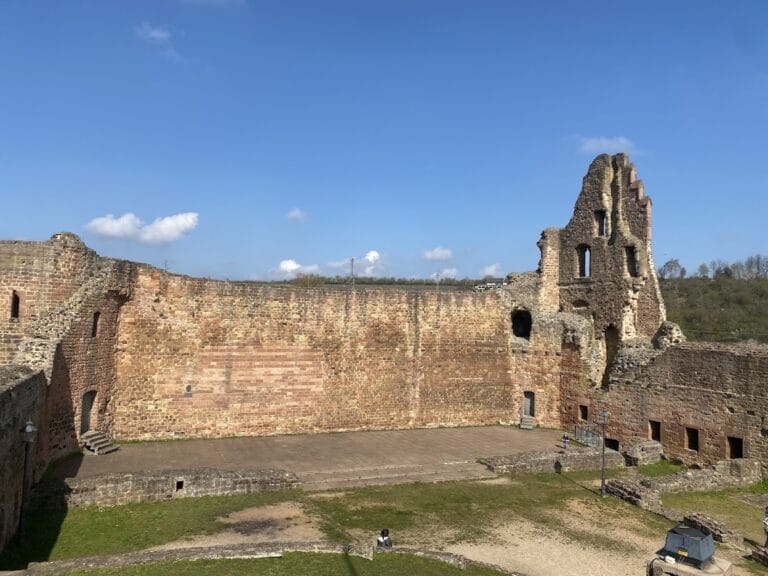Falkenstein Castle: A Medieval Fortress in Germany
Visitor Information
Google Rating: 4.5
Popularity: Low
Google Maps: View on Google Maps
Official Website: www.donnersberg-touristik.de
Country: Germany
Civilization: Medieval European
Remains: Military
History
Falkenstein Castle is a medieval fortress located in the municipality of Falkenstein in modern-day Germany. It was originally constructed by the lords of Falkenstein, a family connected to the lords of Bolanden, which points to its origin as a noble stronghold in the medieval Holy Roman Empire.
The castle first appears in historical records in 1135, establishing the Falkenstein family’s presence in the region. By 1233, it was under the ownership of Philip I of Falkenstein, who held important imperial duties as Reichskämmerer, or Imperial Chamberlain. Philip also served as burgvogt, a type of castle administrator, at nearby Trifels Castle, known for safeguarding the Imperial Regalia, highlighting Falkenstein’s connection to the empire’s broader political network.
Following the death of the Münzenberg chamberlain in 1255, Philip I acquired additional authority in the Wetterau region, with Lich becoming the focal point of his holdings. In the mid-1300s, the family expanded their influence by building New Falkenstein Castle in the Taunus mountain range, reflecting their ongoing territorial ambitions.
After Archbishop Werner of Trier’s death, ownership transitioned through several noble lines, including the Virneburg and Daun-Oberstein families. Around the year 1500, Uhland I of Falkenstein regained control and undertook rebuilding efforts. Descendants of this line later extended their reach to Styria, Austria, by acquiring Bertholdstein Castle.
In 1458, Emperor Frederick III granted Falkenstein Castle to the Dukes of Lorraine, introducing a new phase of ownership. The castle’s strategic position made it a target during the Thirty Years’ War; French forces captured it in 1644 and again besieged and destroyed it in 1647. Control shifted once more in 1736, when the castle and its surrounding county came under the dominion of the Habsburg imperial family.
During the Coalition Wars at the end of the 18th century, French troops destroyed Falkenstein Castle again in 1794. Since then, it has remained a ruin until partial restoration activities began in 1979, preserving the remains of this historic fortress.
Remains
Falkenstein Castle was built as a hilltop fortress, or Reichsburg, on the Donnersberg hill, the highest point in the Palatinate region. Its location provided natural defensive advantages typical for medieval fortifications. The castle’s layout included strong outer walls forming an enceinte, or ring wall, designed to protect the inner buildings and courtyard.
One of the key surviving features is the bergfried, the tall main tower that served both as a lookout and last refuge during attacks. Although mostly lost today, a small section of its wall remains. Historically, this tower rose to an impressive height of about 37 meters, including the rocky base on which it stood, making it a dominant element in the castle’s silhouette.
Parts of the outer walls belonging to the lord’s residence, sometimes called the Ritterhaus or great hall, survive as ruins. These defensive walls delineated the space where the ruling family lived and managed the castle’s affairs. Additionally, the castle’s shield wall, a thicker, reinforced portion of the fortification designed to absorb attacks, can be partially seen.
A cistern used for storing water was also part of the complex, reflecting the necessity of securing water supply during sieges. Today, the remains of these stone constructions provide insight into medieval building techniques, though decorative details and specific architectural refinements have not been preserved.
The existing fragments illustrate Falkenstein’s role as a defensive stronghold, and ongoing preservation has helped maintain these elements as tangible links to the castle’s long and varied history.







